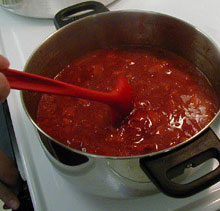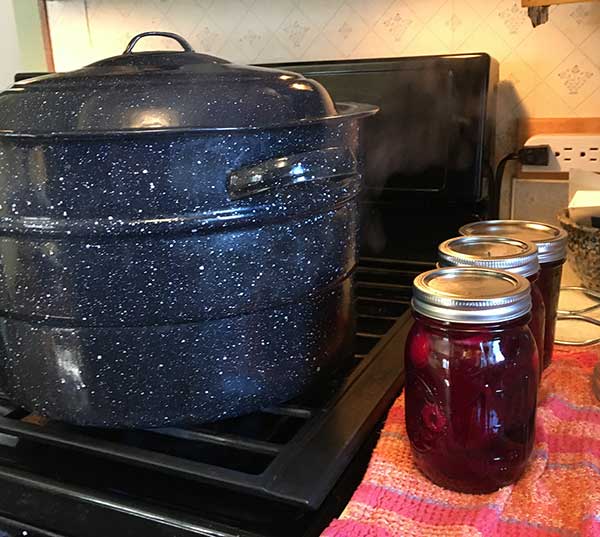Making jellied products is not difficult, but it's important to follow reliable, tested recipes as well as the following guidelines.
Choose ripe fruit that is free of bruises or mold
- Using fresh fruit at room temperature helps dissolve the sugar.
- Wash berries thoroughly; do not allow them to soak which reduces nutritional value and contributes to a soft product.
Do not reduce the amount of sugar
- The proper proportion of sugar, fruit and pectin is important to get a good jellied product.
- Sugar contributes flavor, but is also a preservative which helps prevent the growth of microorganisms.
- Granulated white sugar is usually used; other sweetener flavors can overpower the fruit's natural flavor and sweetness.
- See methods for low sugar alternatives, for special recipes and gelling agents only.
Process ALL cooked jam and jelly products in a boiling-water canner
The USDA and the University of Minnesota Extension recommend boiling-water canning process for all cooked jam and jelly products to prevent mold growth*
How elevation affects the boiling-water canning process
Water boils at 212 F at sea level. For every 550 feet above sea level, water boils 1 degree lower. To compensate, add 1 minute of processing time for each 1000 feet of additional altitude. The mean elevation in Minnesota is 1,200 feet above sea level. Find your elevation.
In addition to elevation, jar size matters. Use the chart below to determine the required processing time for jelled products you preserve.
Processing time in a boiling-water canner for jams and jellies
| Jar size | Elevation | Processing time |
|---|---|---|
| Half or quarter pints | 0-1000 feet | 5 minutes |
| Half or quarter pints | 1001-2000 feet | 6 minutes |
| Half or quarter pints | 2001-3000 feet | 7 minutes |
| Pints | 0-1000 feet | 10 minutes |
| Pints | 1001-2000 feet | 11 minutes |
| Pints | 2001-3000 feet | 12 minutes |
Storing freezer jams
- Store uncooked freezer jams in clean (washed in hot, soapy water and rinsed) jars or plastic freezer containers with tight-fitting lids to prevent loss of quality.
- Leave 1/2 inch of space (headspace) at the top for expansion during freezing.
- Frozen jellied products should last up to one year; in the refrigerator they should last up to one month.
Freezing fruit to make jam or jelly later
If freezing large pieces or whole fruit:
- Measure the amount of fruit carefully before freezing and record.
- If using powdered pectin when making the jam, do not add sugar before freezing.
- If using liquid pectin, combine the measured amount of sugar and fruit together before freezing.
Freezing juice for making jelly:
- Boil the fruit to extract the juice.
- Pour cooled, strained juice into freezer containers.
When making the jam or jelly:
- Thaw the fruit in the refrigerator until only a few ice crystals remain.
- Follow the remaining cooking and processing steps.
Homemade jams and jellies should keep their quality and flavor for up to 1 year if stored in a cool, dark, dry place. If the jar seal remains unbroken and the product shows no visible signs of spoilage from molds or yeast, the jellied product should be safe to eat. Learn how to freeze fruit properly.
*Some sealing methods recommend turning the closed jars of hot jam or jelly upside down (inverting the jars) for 30 seconds to 1 hour. The vacuum seal of jars filled using this method tends to be weaker than those produced by the boiling water canning process. A weak seal is likely to fail during storage and allow for mold growth.
- USDA (2015). USDA Complete Guide to Home Canning
- Cooperative Extension, The University of Georgia. (2011, 2013). Preserving Food: Jams and Jellies
Reviewed in 2021



